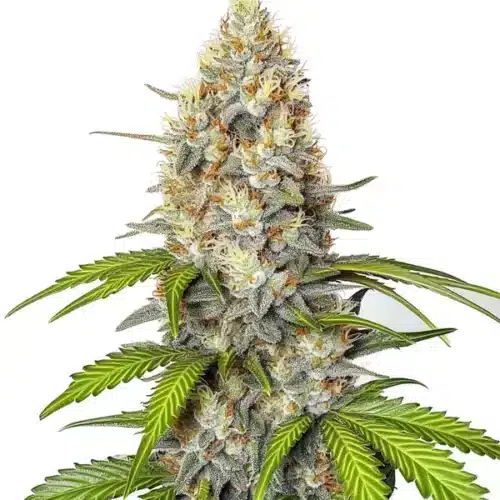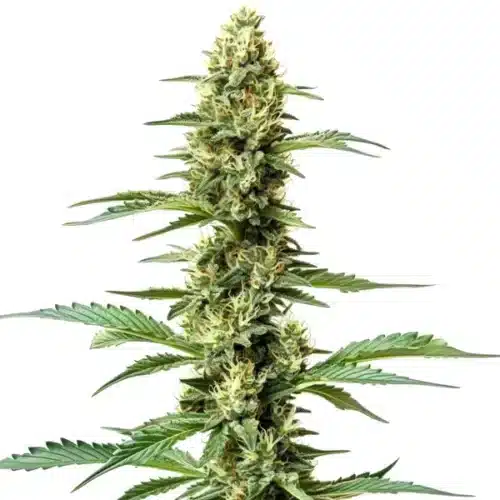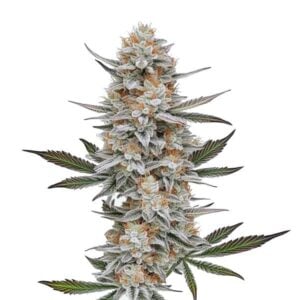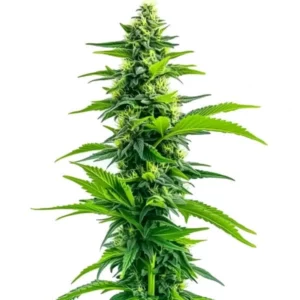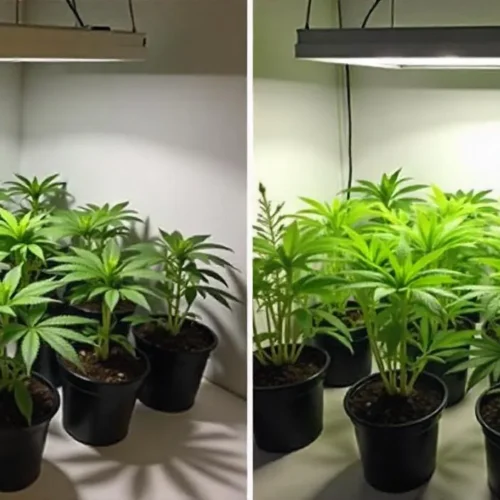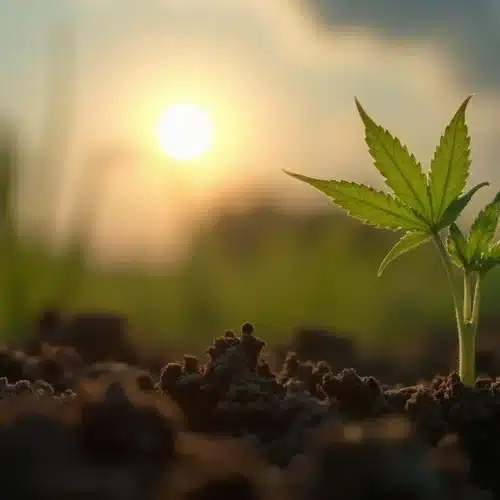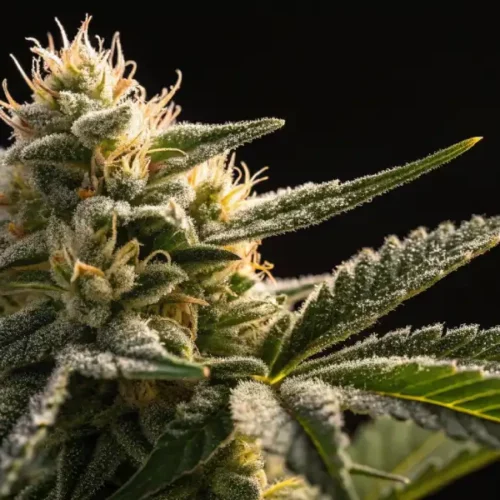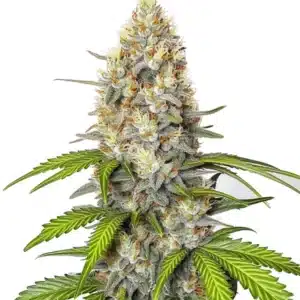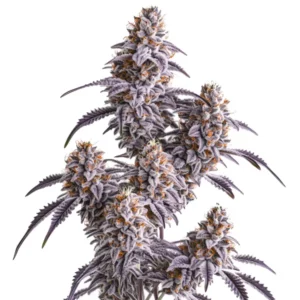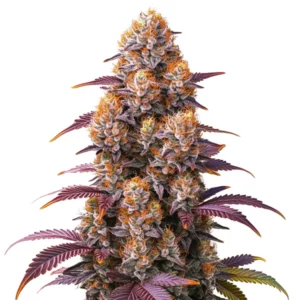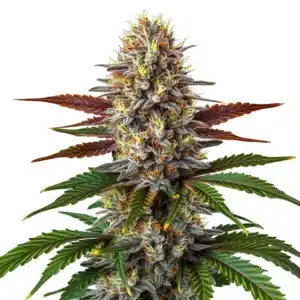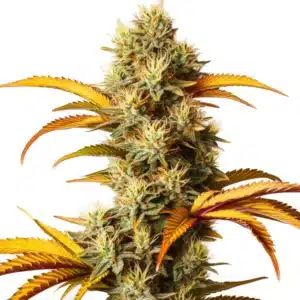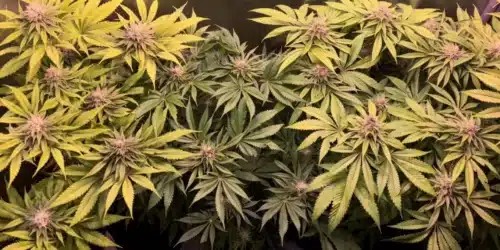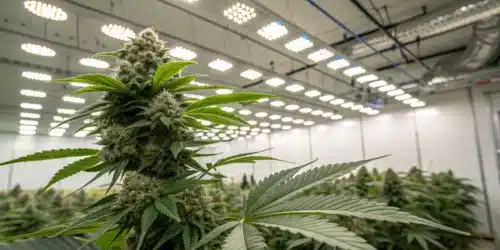Chronic Widow Strain Cannabis Seed Description
Chronic Widow Strain is a highly regarded cannabis strain known for its potent effects and robust growth characteristics. It is a cross between Chronic and White Widow, two legendary strains in the cannabis world. The resulting hybrid inherits the best traits of its parent strains, offering users a balanced experience of relaxation and euphoria.
Chronic Widow Strain typically produces dense, resinous buds with a frosty appearance, thanks to its abundant trichome production. The aroma and flavor profile of this strain are complex, featuring notes of earthiness, pine, and citrus, with hints of spice and sweetness.
Recommended Strains
Chronic Widow
 THC: 17% - 23%
THC: 17% - 23% Type of seed: Feminized
Type of seed: Feminized Phenotype: Mostly Indica
Phenotype: Mostly Indica Day to flower: 8 - 10 weeks
Day to flower: 8 - 10 weeks
Northern Lights x Chronic
 THC: 15% - 19%
THC: 15% - 19% Type of seed: Feminized
Type of seed: Feminized Phenotype: Mostly Indica
Phenotype: Mostly Indica Day to flower: 7 - 8 weeks
Day to flower: 7 - 8 weeks
Promos & Deals
Environmental Requirements for Growing Marijuana Chronic Widow Strain
To cultivate Chronic Widow Strain successfully, it’s essential to create the optimal environment for its growth and development:
Chronic Widow Strain thrives in a Mediterranean climate, with temperatures between 68-80°F (20-27°C) during the day and slightly cooler temperatures at night. It prefers a humidity level of 40-50% during the vegetative stage, which can be lowered to 30-40% during flowering to prevent mold and mildew.
When growing indoors, provide ample ventilation and airflow to maintain optimal temperature and humidity levels. LED grow lights or HPS lamps can be used to provide the necessary light spectrum for healthy growth.
For outdoor cultivation, choose a sunny and sheltered location with well-draining soil. Consider using fabric pots or raised beds to improve drainage and root health. Protect plants from strong winds and heavy rain to prevent damage to the buds.
Setting Up The Growing Cannabis Space
Before starting your Chronic Widow Strain cultivation, ensure you have the proper setup in place:
Indoor Cannabis Cultivation
For indoor growing, set up a dedicated grow space with sufficient lighting, ventilation, and humidity control. Use a grow tent or enclosed area to contain the plants and prevent light leaks.
Choose a high-quality growing medium, such as organic soil or coco coir, and provide adequate nutrients throughout the growth cycle. Monitor pH levels regularly to ensure proper nutrient uptake.
Outdoor Cannabis Cultivation
When growing outdoors, select a sunny location with well-draining soil. Prepare the soil by amending it with compost or other organic matter to improve fertility and structure.
Protect plants from pests and harsh weather conditions by using natural deterrents and providing adequate shelter. Consider installing a drip irrigation system to ensure consistent watering throughout the growing season.
Propagation and Germination of Marijuana Seeds Chronic Widow
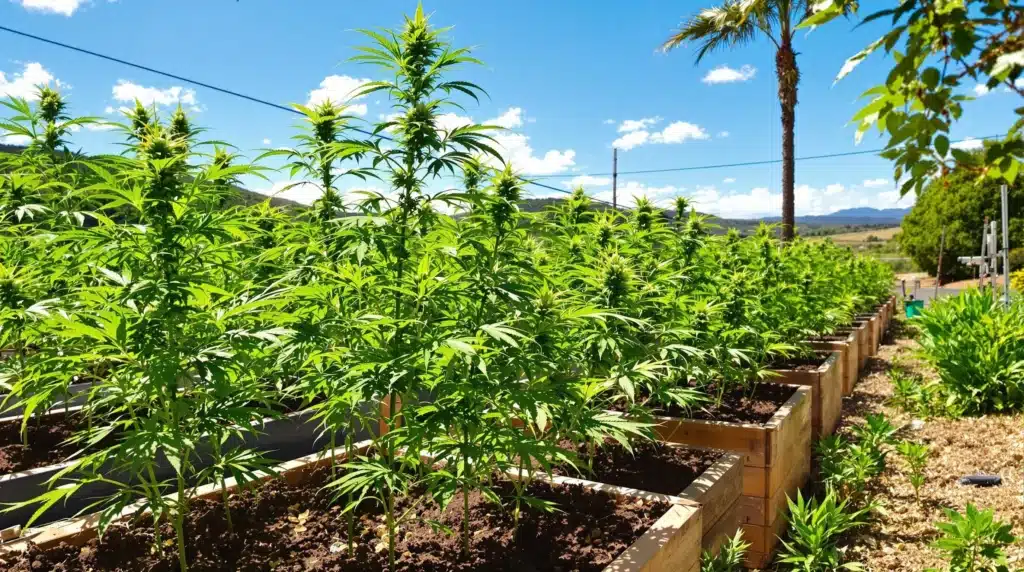
1. Seed Selection:
- Start by choosing high-quality feminized Chronic Widow seeds from a reputable supplier. Feminized seeds ensure that all plants will grow into females, which are the ones that produce the desired buds for consumption.
- Look for seeds with a dark color and a hard, intact shell. Avoid seeds that are green, light-colored, or damaged, as they may have lower viability.
2. Germination Methods:
- There are several methods for germinating marijuana seeds, but two of the most common and reliable methods are the paper towel method and the direct-to-soil method.
Paper Towel Method:
- Moisten a paper towel with distilled water until it is damp but not dripping wet.
- Place the seeds evenly spaced on one half of the paper towel.
- Fold the other half of the paper towel over the seeds to cover them completely.
- Place the paper towel with the seeds in a sealed plastic bag or container to maintain moisture.
- Store the bag/container in a warm, dark place with temperatures around 70-80°F (21-27°C) to facilitate germination.
- Check the seeds daily and ensure that the paper towel remains moist but not soaked.
- After 24-72 hours, the seeds should start to sprout, indicating successful germination.
Direct-to-Soil Method:
- Prepare small pots or seedling trays filled with a moistened, well-draining growing medium such as coco coir or seedling mix.
- Make a small indentation in the center of each pot or cell, about 1/2 inch deep.
- Place a single seed in each indentation and cover it lightly with soil.
- Water the soil gently to ensure it is evenly moist but not waterlogged.
- Place the pots or trays in a warm, dark location with temperatures around 70-80°F (21-27°C).
- Keep the soil consistently moist but not saturated during the germination process.
- Seeds should germinate within 24-72 hours, with the emergence of a small taproot followed by the seedling breaking through the soil surface.
3. Transplanting Seedlings:
- Once the seeds have sprouted and developed a healthy taproot, they are ready to be transplanted into larger containers or the final growing location.
- Handle the seedlings carefully by their leaves to avoid damaging the delicate stems.
- Transplant seedlings into containers filled with a well-draining, nutrient-rich growing medium, ensuring they are planted at the same depth as they were in the germination medium.
- Water the transplanted seedlings gently to settle the soil around the roots and provide support.
4. Seedling Care:
- After transplanting, provide seedlings with adequate light, warmth, and moisture to support healthy growth.
- Maintain a consistent temperature between 70-80°F (21-27°C) and humidity levels around 60-70% to promote vigorous growth.
- Gradually introduce seedlings to brighter light to prevent shock and encourage strong, compact growth.
- Continue to water seedlings as needed, allowing the top inch of soil to dry out slightly between waterings.
- Monitor seedlings for signs of stress, nutrient deficiencies, or pests, and address any issues promptly to ensure optimal development.
By following these steps and techniques, growers can achieve successful germination and propagation of Chronic Widow Strain marijuana seeds, setting the stage for healthy growth and abundant yields.
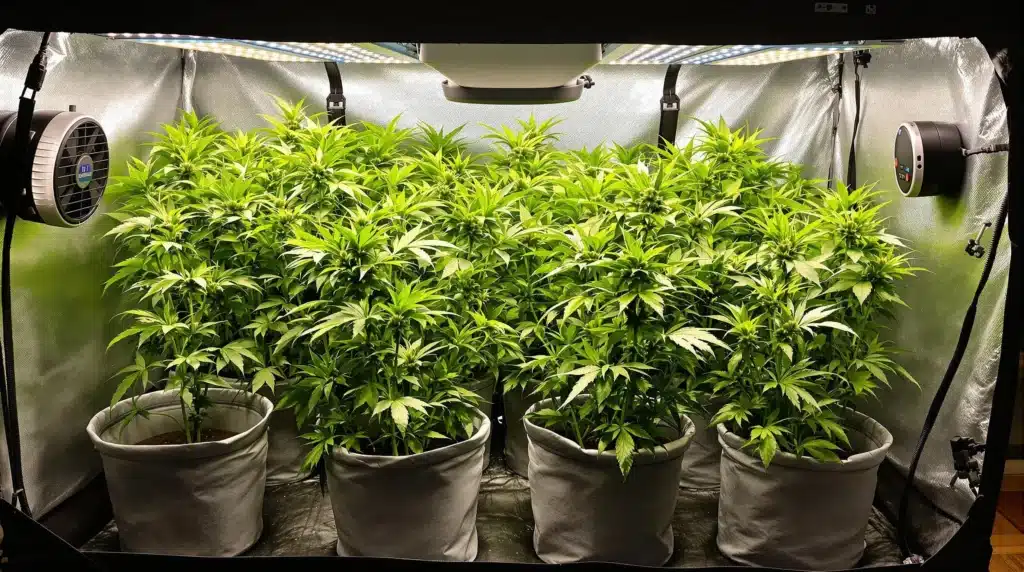
Vegetative Phase of Cannabis seeds Chronic Widow Strain
During the vegetative phase of growing Chronic Widow Strain cannabis seeds, the primary focus is on establishing a strong foundation for robust growth and vigorous foliage. Here’s a more detailed breakdown of key aspects to consider during this phase:
Lighting: Providing the right amount of light is crucial during the vegetative stage. Typically, growers aim for a light cycle of 18-24 hours of light per day to encourage vigorous vegetative growth. High-quality grow lights, such as LEDs or HPS lamps, are commonly used to ensure plants receive adequate light intensity and spectrum for optimal photosynthesis.
Nutrition: Cannabis plants require a balanced diet of nutrients to support healthy growth during the vegetative phase. Nitrogen (N) is particularly important during this stage as it promotes leaf and stem development. Using a fertilizer specifically formulated for the vegetative growth stage can help provide the necessary nutrients in the correct proportions.
Watering: Proper watering is essential to prevent dehydration or overhydration of the plants. Water plants thoroughly when the top inch of the soil feels dry, ensuring that excess water can drain away freely to avoid waterlogged roots. Maintaining consistent moisture levels in the growing medium helps prevent stress and promotes healthy root development.
Training: Many growers choose to implement training techniques during the vegetative phase to shape the plant’s growth and maximize yield potential. Techniques such as topping, where the top growth tip is removed to encourage lateral branching, or low-stress training (LST), where branches are gently bent and tied down, can help create a bushier plant structure and improve light penetration.
Pruning: Regular pruning or defoliation may be necessary to remove any yellowing or dead leaves, as well as to improve airflow and light penetration within the canopy. This can help prevent issues such as mold or mildew and promote even growth throughout the plant.
Environmental Conditions: Maintaining optimal environmental conditions is essential for healthy vegetative growth. This includes maintaining temperatures between 68-80°F (20-27°C) and relative humidity levels around 40-50%. Adequate ventilation and airflow within the growing space help prevent heat buildup and humidity-related issues.
Monitoring: Regular monitoring of plant health and growth progress is essential during the vegetative phase. Keep an eye out for any signs of stress, nutrient deficiencies, or pests, and take prompt action to address any issues that arise. Adjusting care practices as needed based on the plant’s response helps ensure optimal growth and development.
By paying attention to these key factors and providing the necessary care and attention during the vegetative phase, growers can set their Chronic Widow Strain cannabis plants on the path to a healthy and productive growth cycle.
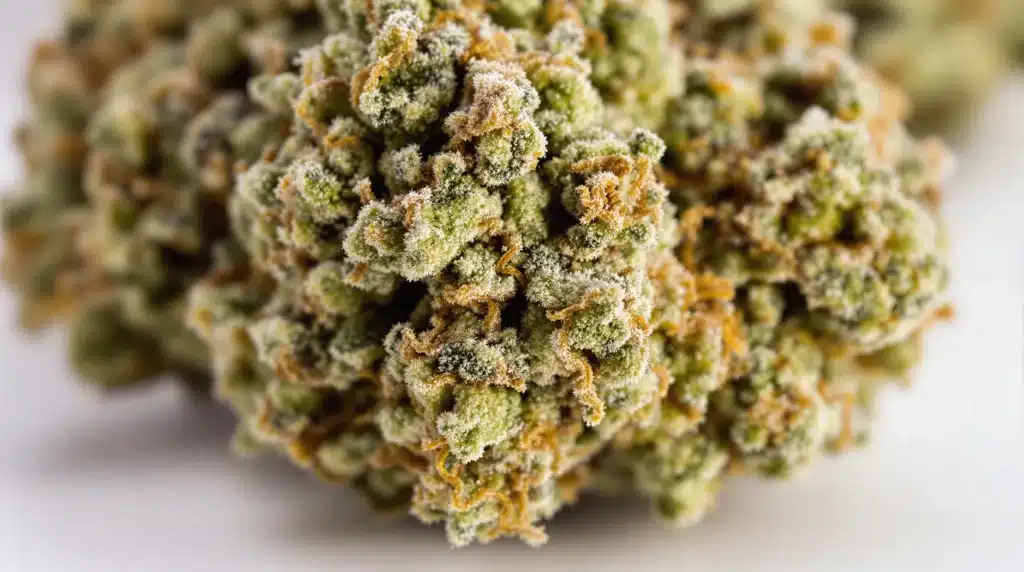
Flowering Phase of Marijuana Seeds Chronic Widow Strain
The flowering phase is a crucial stage in the life cycle of Chronic Widow Strain plants, as this is when they transition from vegetative growth to the production of buds. Proper care and attention during this phase are essential to ensure the development of high-quality flowers with potent cannabinoid content.
- Lighting: During the flowering phase, it’s essential to adjust the lighting schedule to stimulate bud production. Switch to a 12/12 light cycle, providing 12 hours of uninterrupted darkness each day. This mimics the natural light cycle that occurs during the fall months, signaling to the plants that it’s time to flower.
- Light Spectrum: While the quantity of light is important, so is the quality. Choose grow lights that emit the appropriate spectrum for flowering, typically with a higher proportion of red and orange wavelengths. LED grow lights or high-pressure sodium (HPS) lamps are popular choices for flowering cannabis plants.
- Nutrition: As Chronic Widow Strain plants enter the flowering phase, their nutritional needs change. Transition from a nitrogen-rich fertilizer to a bloom-specific formula with higher phosphorus and potassium levels. These nutrients support flower formation and development, contributing to larger, denser buds.
- Temperature and Humidity: Maintaining the right environmental conditions is crucial during flowering. Keep temperatures within the range of 65-75°F (18-24°C) to promote healthy growth and resin production. Humidity levels should be kept relatively low, around 40-50%, to prevent mold and mildew issues that can arise in the dense buds.
- Watering: Be mindful of watering practices during the flowering phase. While it’s essential to keep the soil or growing medium consistently moist, overwatering can lead to problems such as root rot or nutrient leaching. Allow the top layer of soil to dry slightly between waterings, and always use room-temperature water to avoid shocking the roots.
- Support: As Chronic Widow Strain plants develop heavy buds during flowering, providing support is often necessary to prevent branches from breaking under their weight. Use bamboo stakes, trellises, or plant yoyos to support the branches and help distribute the weight of the buds evenly.
Throughout the flowering phase, closely monitor the development of the buds and observe any changes in plant health or growth patterns. Adjust environmental conditions, nutrient levels, and other factors as needed to optimize the flowering process and maximize yield and potency.
Harvesting should be timed carefully to ensure peak potency and flavor, typically when the majority of trichomes have turned milky white with some amber hues. Properly dried and cured buds will retain their potency and aroma for an enjoyable smoking experience.
Pest And Disease Control for Cannabis Growing – Chronic Widow Strain
Preventing and managing pests and diseases is essential for a successful harvest:
- Prevention: Implement cultural practices such as proper sanitation and crop rotation to reduce pest and disease pressure.
- Monitoring: Regularly inspect plants for signs of pests or diseases, including yellowing leaves, stunted growth, or unusual spots.
- Control: Use organic or low-toxicity pest control methods such as neem oil or insecticidal soap to manage pests without harming beneficial insects or the environment.
For diseases, practice good hygiene and remove infected plant material promptly to prevent spread.
Harvesting and Curing for Cannabis Growing – Chronic Widow Strain
Harvesting and curing are crucial steps in the cultivation process that significantly impact the quality, potency, and overall experience of the final product. Here’s a detailed breakdown of each stage:
Harvesting:
Harvesting cannabis at the right time ensures optimal cannabinoid and terpene levels, resulting in potent and flavorful buds. When determining the ideal harvest time for Chronic Widow Strain, focus on the maturity of the trichomes, which are the tiny resin glands covering the buds.
Trichomes transition through different stages of development, starting clear, becoming milky white, and eventually turning amber. For a balanced high with both cerebral and physical effects, aim to harvest when the majority of trichomes are milky white with some starting to turn amber.
When harvesting, use sharp pruning shears to cut branches at the base, taking care not to damage the buds. Remove any excess foliage while leaving the sugar leaves intact, as they contain valuable cannabinoids and contribute to potency.

Drying:
After harvesting, it’s time to dry the buds to remove excess moisture and prepare them for curing. Hang the trimmed branches upside down in a dark, well-ventilated room with temperatures around 60-70°F (15-21°C) and humidity levels between 50-60%.
Proper drying is essential to prevent mold and mildew growth while preserving the integrity of the buds. Avoid drying too quickly, as this can result in harsh smoke and diminished flavor. Similarly, overly slow drying can lead to mold problems.
Monitor the drying process closely, checking buds regularly for moisture levels. Buds are ready for the next stage of curing when the stems snap easily, and the smaller branches feel dry to the touch.
Curing:
Curing is the final step in the process, where buds are placed in airtight containers to further develop their aroma, flavor, and smoothness. Proper curing enhances the overall quality of the cannabis, resulting in a more enjoyable smoking experience.
To cure Chronic Widow Strain buds, transfer them to glass jars or containers with tight-fitting lids. Fill the jars with buds, leaving some space at the top for airflow. Seal the jars and store them in a cool, dark place, such as a closet or cabinet.
During the curing process, open the jars once or twice a day to allow fresh air to enter and moisture to escape. This “burping” helps prevent mold while promoting proper moisture distribution within the buds.
Cure Chronic Widow Strain buds for a minimum of two weeks, although longer curing times, ranging from one to three months or more, can further enhance their quality. As the buds cure, they will develop a more complex aroma, smoother smoke, and enhanced potency.
After the curing process is complete, Chronic Widow Strain buds are ready for consumption. Store cured buds in airtight containers in a cool, dark place to preserve their freshness and potency over time.
By mastering the harvesting and curing process, growers can unlock the full potential of Chronic Widow Strain cannabis, resulting in premium-quality buds that deliver a satisfying and enjoyable smoking experience.
Chronic Widow Strain: Indica or Sativa?
Chronic Widow Strain is a well-balanced hybrid with characteristics of both Indica and Sativa:
While it delivers relaxing effects typical of Indica strains, it also offers uplifting euphoria and creativity associated with Sativa strains. This balanced high makes Chronic Widow Strain suitable for various occasions and preferences.
Advantages of Growing Chronic Widow Strain Cannabis Seeds
Growing Chronic Widow Strain offers several benefits:
- High potency and robust growth
- Balanced effects suitable for diverse preferences
- Resilience to pests and diseases
- Adaptability to indoor and outdoor cultivation
- Short flowering time for faster harvests
These advantages make Chronic Widow Strain a popular choice among growers seeking quality and reliability.
Disadvantages of Growing Chronic Widow Strain Cannabis Seeds
- Potential for strong odor during flowering, requiring odor control measures
- Requires precise nutrient management to avoid deficiencies or burn
- May need support for heavy buds during flowering
- Some phenotypes may have lower yields compared to other strains
Despite these challenges, many growers find the unique qualities of Chronic Widow Strain worth the effort.
Why buy Chronic Widow Strain Marijuana Seeds
There are compelling reasons to consider purchasing Chronic Widow Strain seeds:
- Unique aroma and flavor profile for an enjoyable smoking experience
- Balanced effects suitable for both recreational and medicinal use
- Potential medicinal benefits, including pain relief and stress reduction
- Reliable genetics and availability from reputable seed banks
- Adaptability to different growing environments and cultivation techniques
When buying Chronic Widow Strain seeds, choose a trusted source to ensure quality and authenticity.
Problem in Cultivation Chronic Widow Strain Cannabis Seeds
While Chronic Widow Strain is resilient, growers may encounter some common issues:
- Nutrient imbalances leading to deficiencies or toxicity
- Pest infestations, particularly during flowering
- Strong odor during flowering phase requiring odor control
- Environmental stressors such as temperature fluctuations or inadequate airflow
By addressing these challenges promptly and effectively, growers can maximize the success of their Chronic Widow Strain cultivation and enjoy a bountiful harvest of premium buds.
Cultivating Chronic Widow Strain requires attention to detail and a commitment to providing the best possible care. With proper techniques and care, growers can enjoy the rewards of growing this exceptional cannabis strain.

